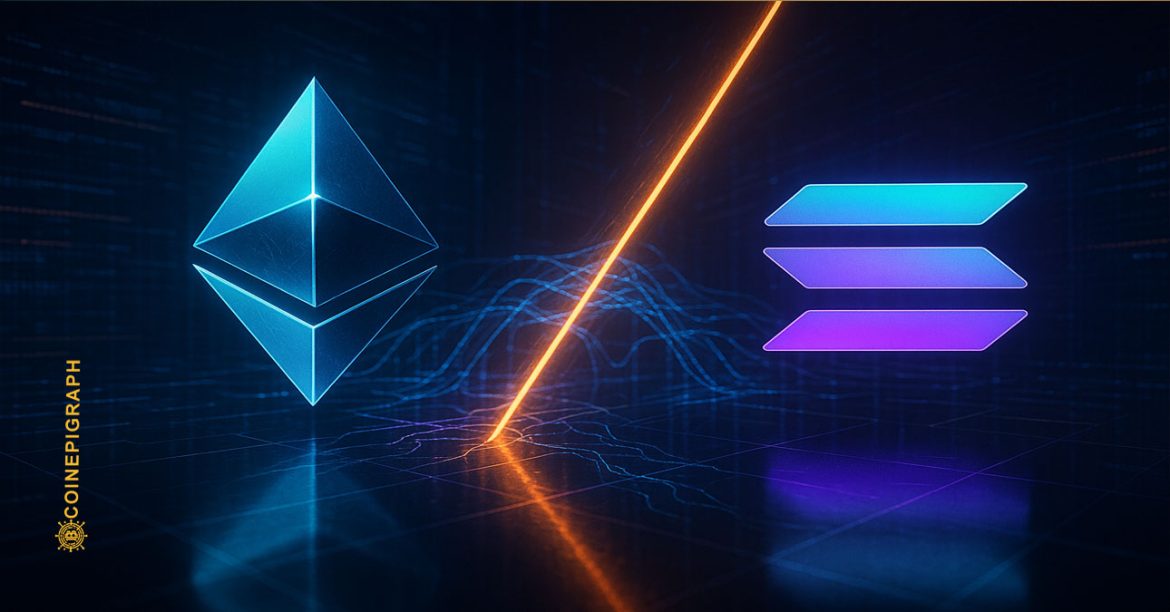By CoinEpigraph Editorial Desk
Solana co-founder Anatoly Yakovenko has sparked a new round of debate in the blockchain world, asserting that Ethereum’s Layer-2 (L2) networks do not automatically inherit the base layer’s security. His remarks strike at the heart of Ethereum’s scalability narrative and question whether its expanding ecosystem of L2s truly shares the same trust model as the mainnet.
A Fault Line in the Security Assumption
Speaking on social channels earlier this week, Yakovenko called the long-standing claim that “L2s inherit ETH security” “erroneous.”
He argued that while Ethereum’s base layer remains robust, each L2 introduces independent code paths, multisig structures, and bridge mechanisms that expand the overall attack surface.
“Every L2 is its own blockchain,” Yakovenko noted. “It can fail in ways that have nothing to do with Ethereum’s consensus.”
His point: an L2’s rollup proofs or bridge custodians may connect to Ethereum, but the security of user assets ultimately depends on the quality of the L2’s internal design — not merely its anchoring contract on mainnet.
Layer-2 Boom, Fragmented Trust
Ethereum’s scaling roadmap hinges on L2 networks that batch transactions off-chain before settling to mainnet. Yet, with over 120 verified L2s now in operation, Yakovenko’s critique raises practical questions: how many of them genuinely provide mainnet-level assurance?
Analysts note that many rollups and sidechains rely on trusted sequencers or multisignature bridges — central points of failure that could undermine decentralization. The claim of “inherited security,” Yakovenko suggests, glosses over these operational differences.
By contrast, Solana’s model focuses on high-throughput execution directly on a single base layer, avoiding the fragmentation of rollups. While the two philosophies aim at similar goals — scalability and cost reduction — they approach trust and verification from opposite directions.
Implications for Builders and Users
Yakovenko’s warning isn’t an attack on Ethereum, but a call for precision in how security is communicated to the public. Developers building on L2s must understand the independent risk models; users should verify how assets are bridged, sequenced, and finalized.
If his critique gains traction, it may influence how institutions assess the systemic risk of multi-chain ecosystems — especially as more value migrates to L2s. For investors, the debate underscores that “Ethereum compatibility” does not necessarily equal “Ethereum security.”
👉 “The CoinEpigraph Bottom Line”
In the arms race to scale blockchains, the strongest claim may not be who processes the most transactions — but who proves they can secure them.
At Coinepigraph, we pride ourselves on delivering cryptocurrency news with the utmost journalistic integrity and professionalism. Our dedicated team is committed to providing accurate, insightful, and unbiased reporting to keep you informed in the ever-evolving crypto landscape. Stay tuned as we expand our coverage to include new sections and thought-provoking op-eds, ensuring Coinepigraph remains your trusted source for all things crypto. -Ian Mayzberg Editor-in-Chief
The team at CoinEpigraph.com is committed to independent analysis and a clear view of the evolving digital asset order.
To help sustain our work and editorial independence, we would appreciate your support of any amount of Bitcoin/Satoshi to this address below: 3NM7AAdxxaJ7jUhZ2nyfgcheWkrquvCzRm
and through our Support Page.
🔍 Disclaimer: CoinEpigraph is for entertainment and information, not investment advice. Markets are volatile — always conduct your own research.
COINEPIGRAPH does not offer investment advice. Always conduct thorough research before making any market decisions regarding cryptocurrency or other asset classes. Past performance is not a reliable indicator of future outcomes. All rights reserved 2024-2025.




